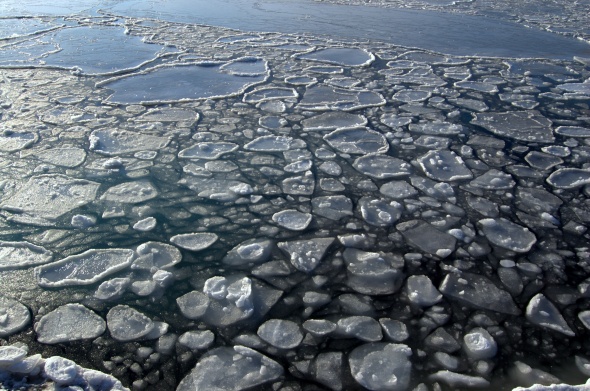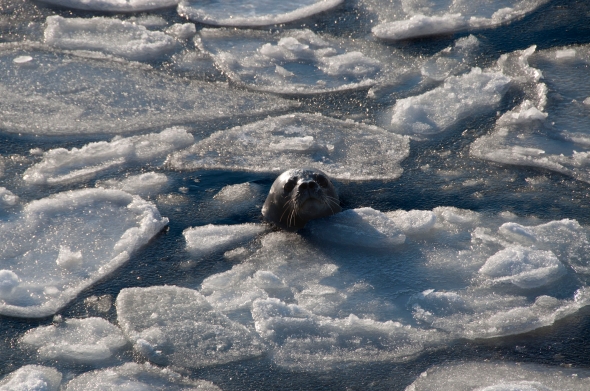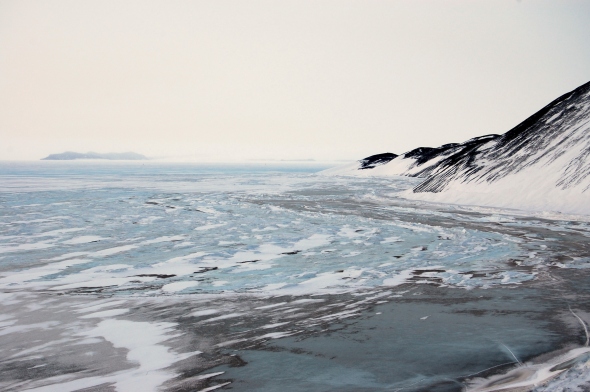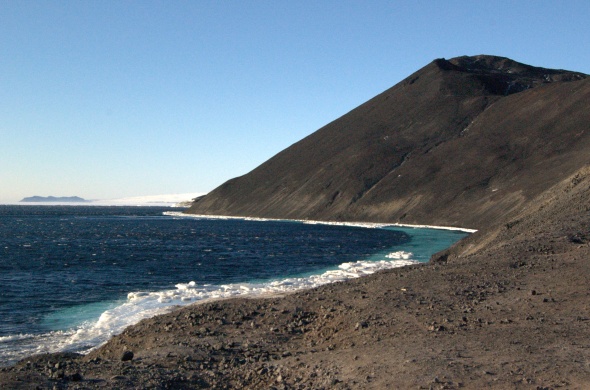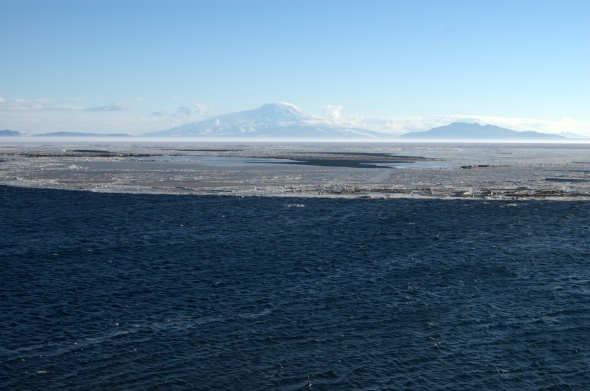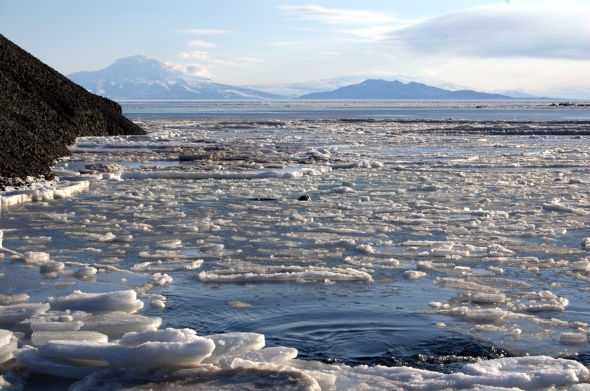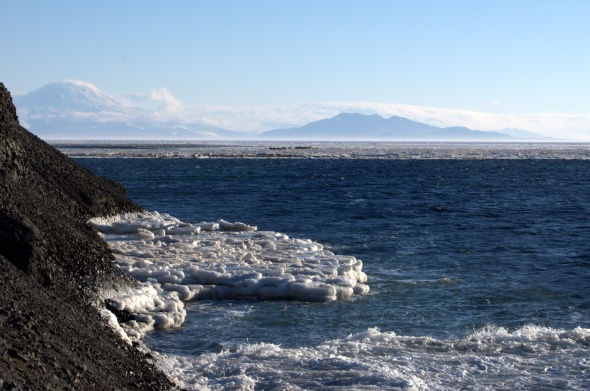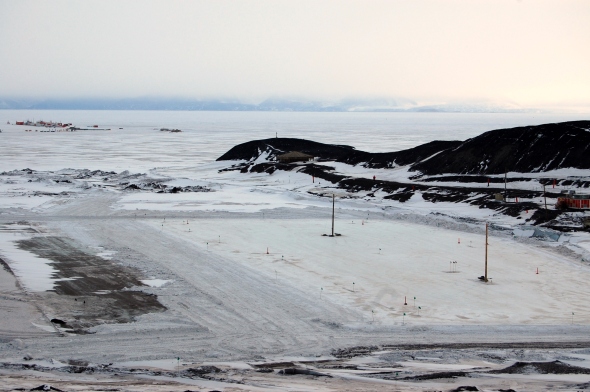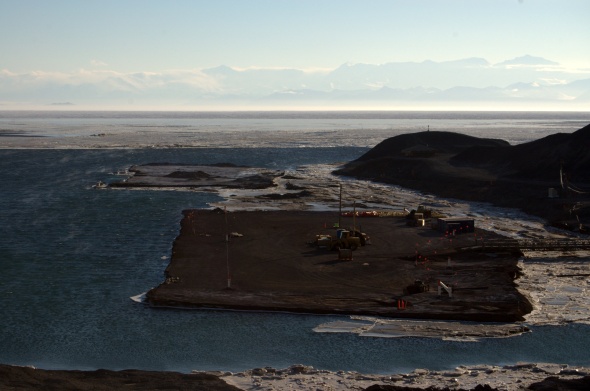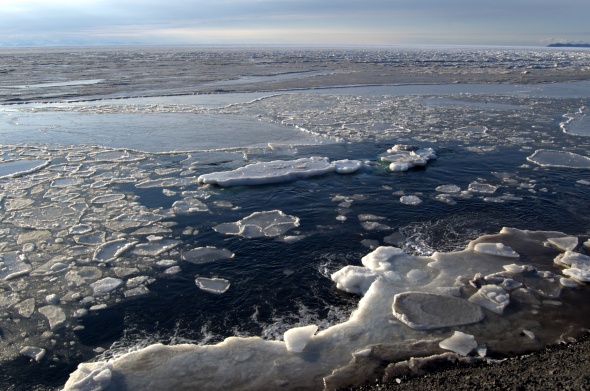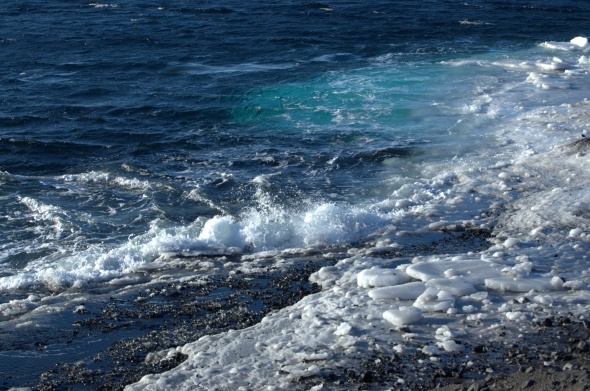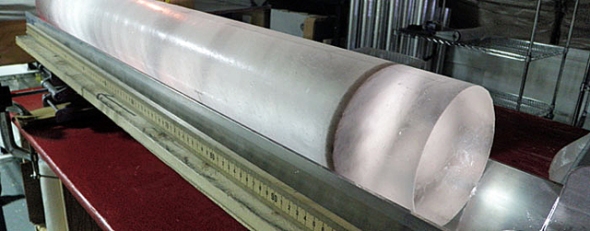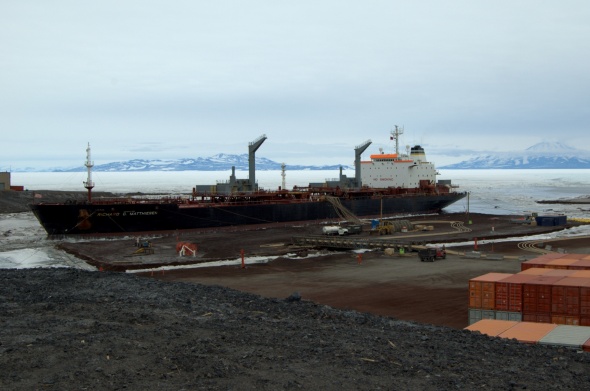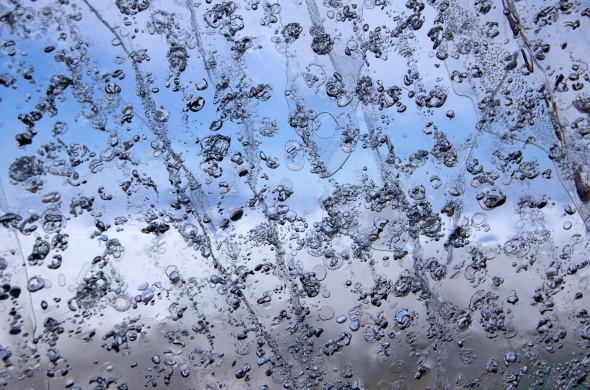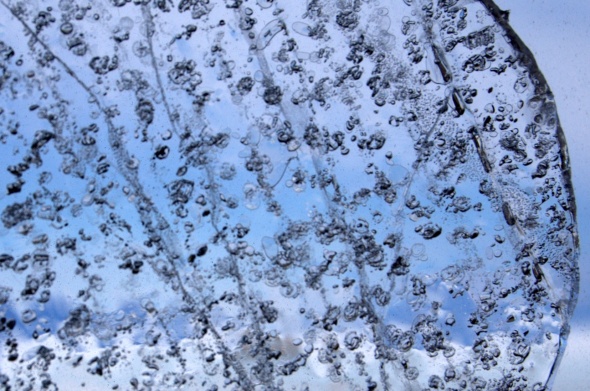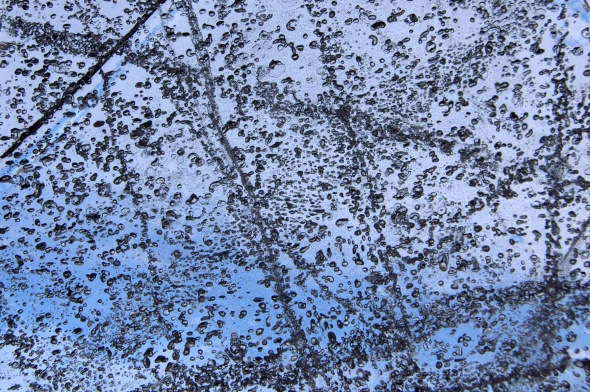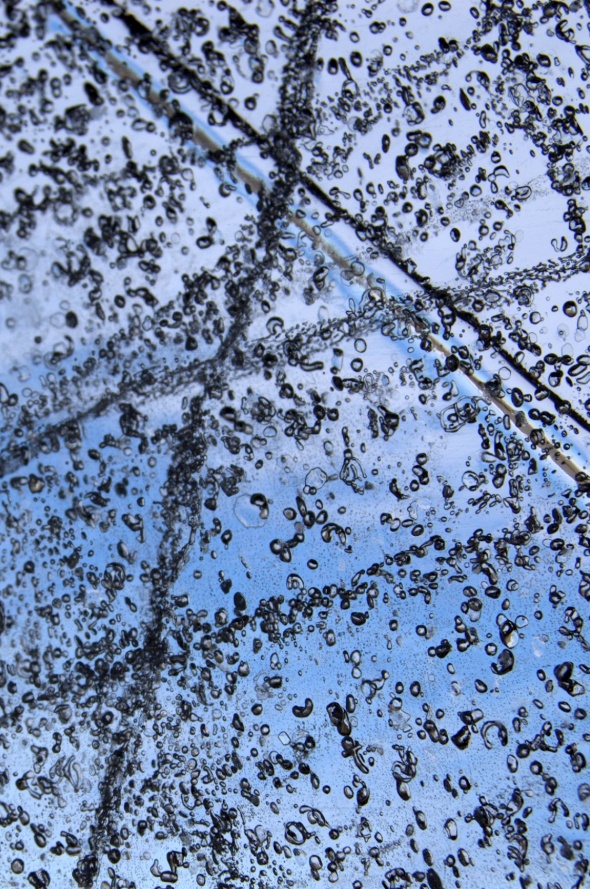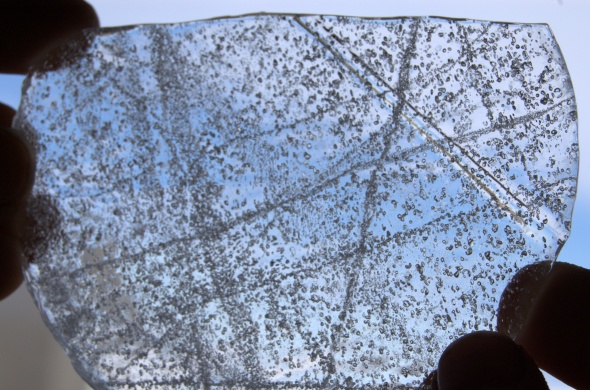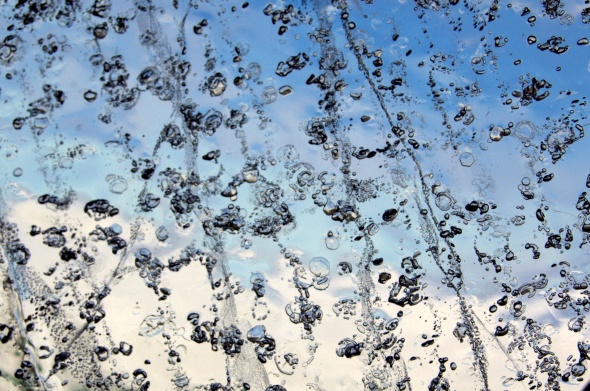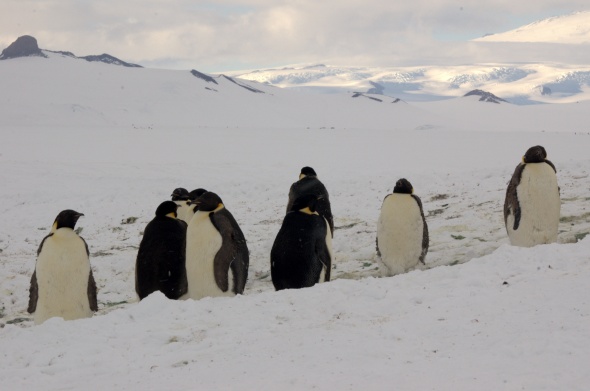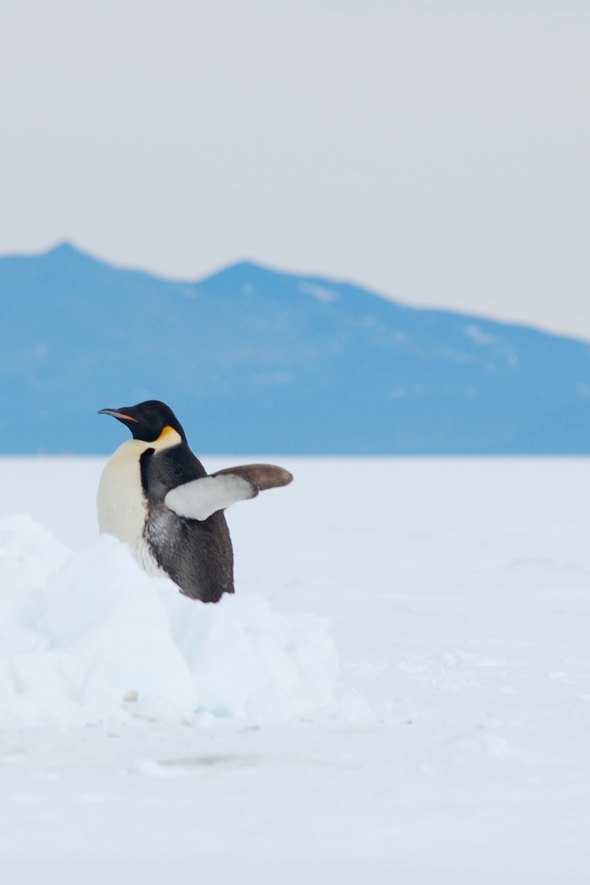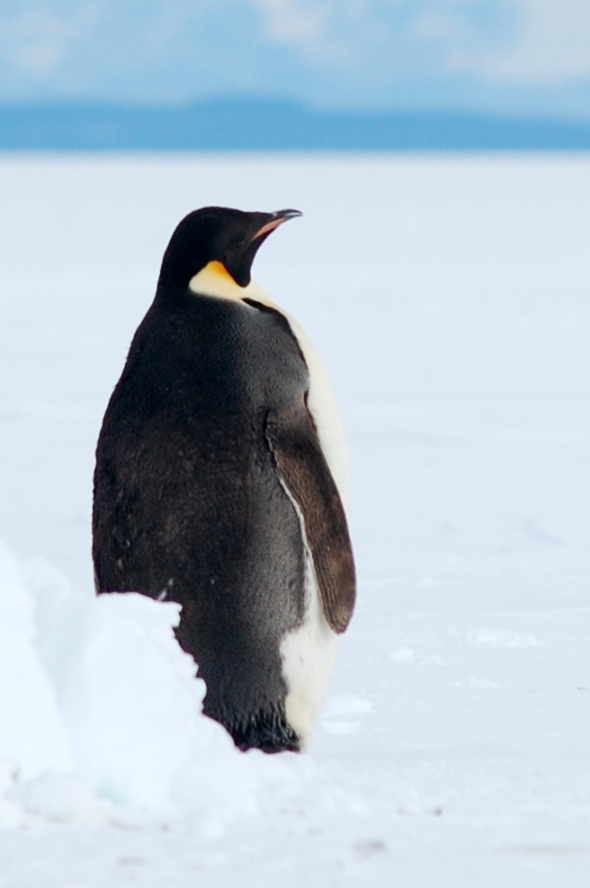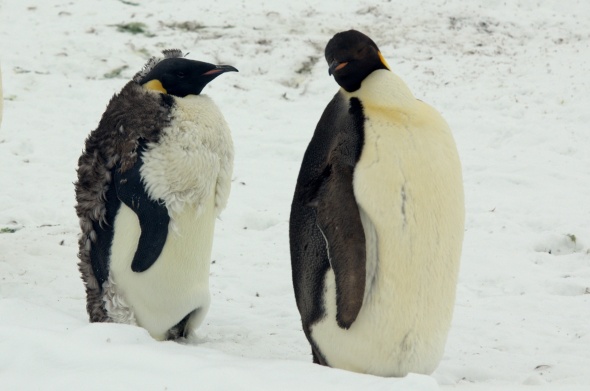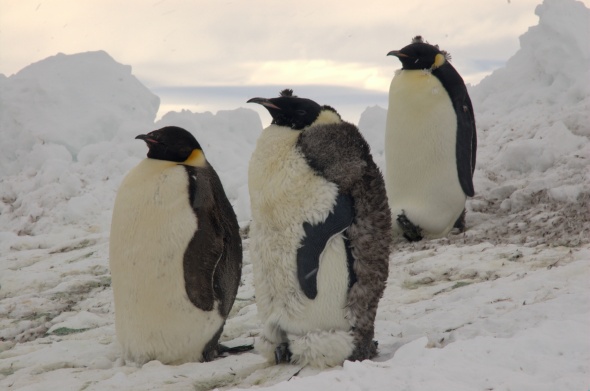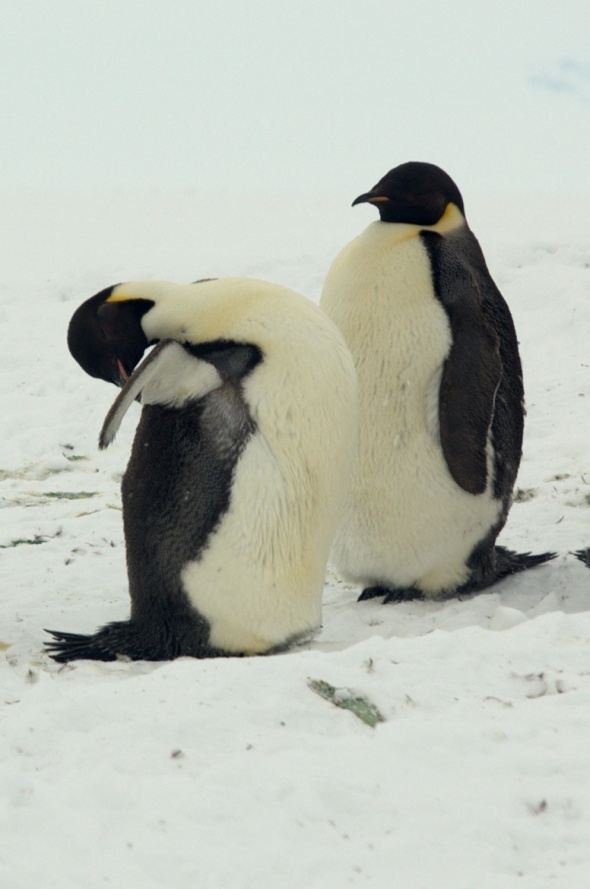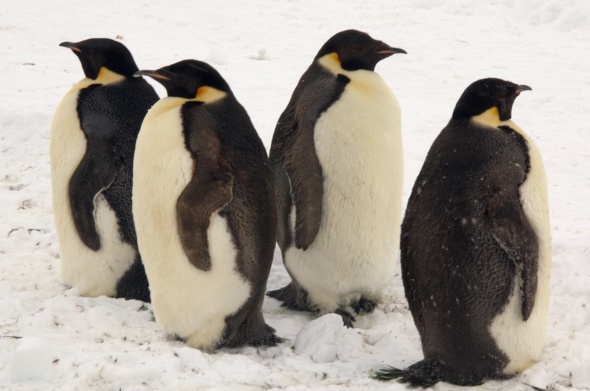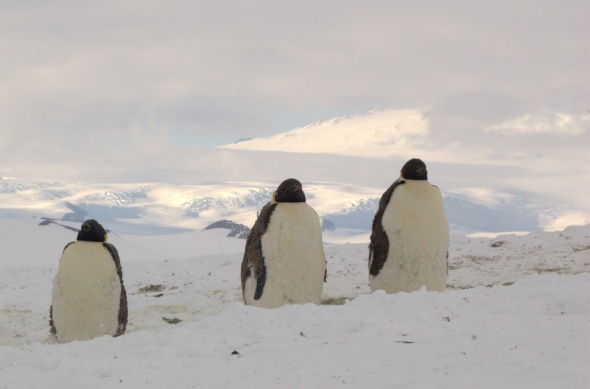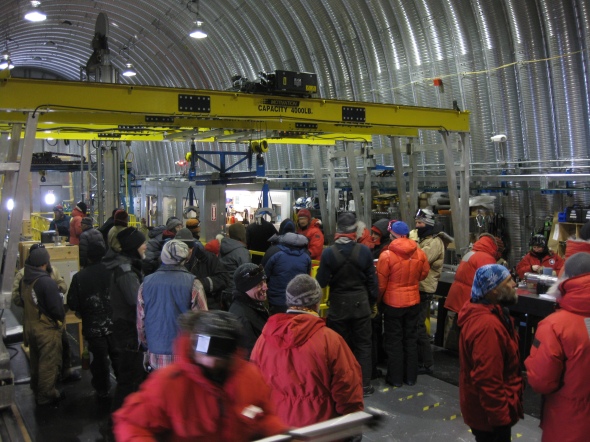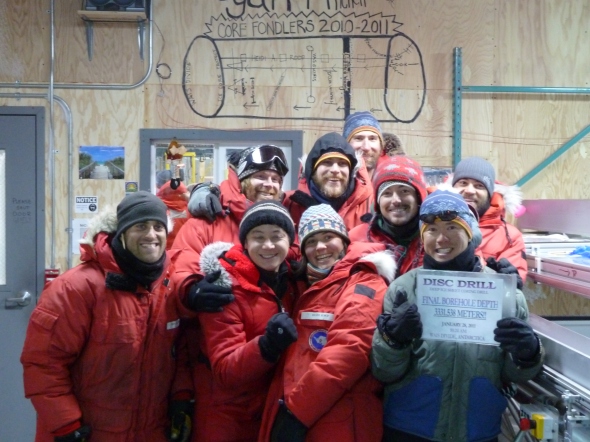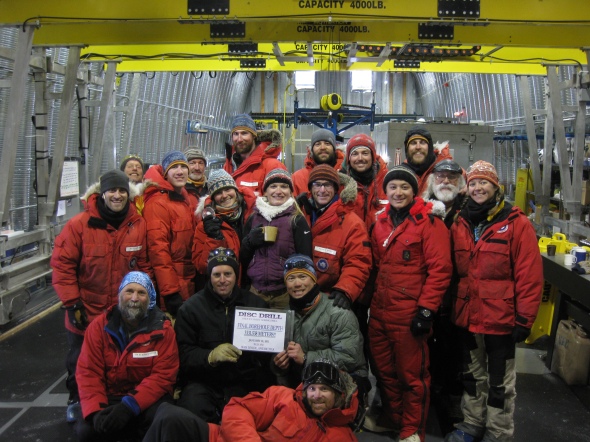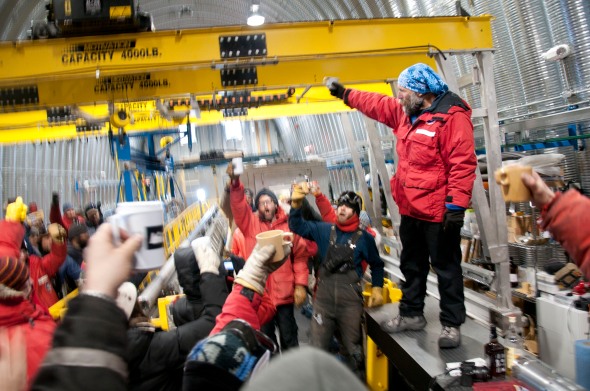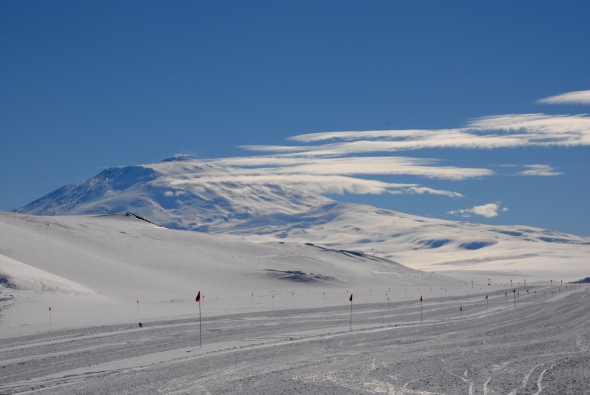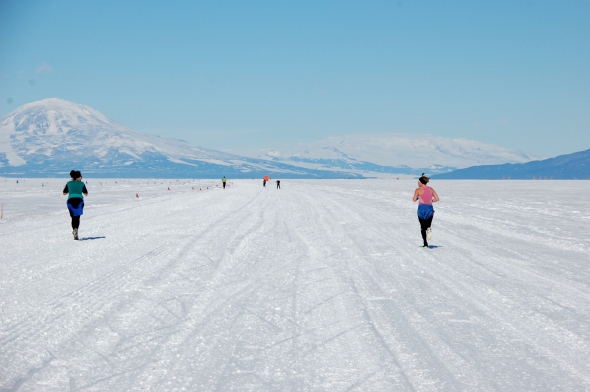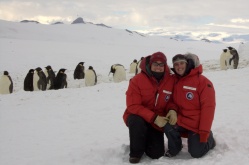There is a lot of different types of ice in Antarctica. When the seasonal ice in front of the station started melting, I saw a new type of ice — Pancake Ice. Until recently, I thought the ice took on the rounded shape because of the icebreaker, which was breaking up the channel. Pancake ice occurs naturally in cold waters!
I love the colors in the following photo, which was taken by Jordan Watson.
Pancake ice is formed from frazil ice and grease ice. Sea ice starts to form as frazil ice in cold moving water. Frazil ice is composed of fine ice crystals floating at the surface. The frazil ice then thickens and sticks together to form grease ice ,which can be seen at the left and top of the next image.
With time, the grease ice separates into ice discs from winds and tidal currents. Pancake ice has raised edges from slush (frazil ice) freezing around the edge of the ice disc or from collisions between ice pieces.
The next two photos were also taken by Jordan. A weddell seal checking us out through the broken ice:
And finally, an awesome photo of a piece of sheet ice floating away from station. This is a large piece of ice that broke off from an ice shelf. It is different from pancake ice. I had to include it anyway, because it is such a neat photo!



